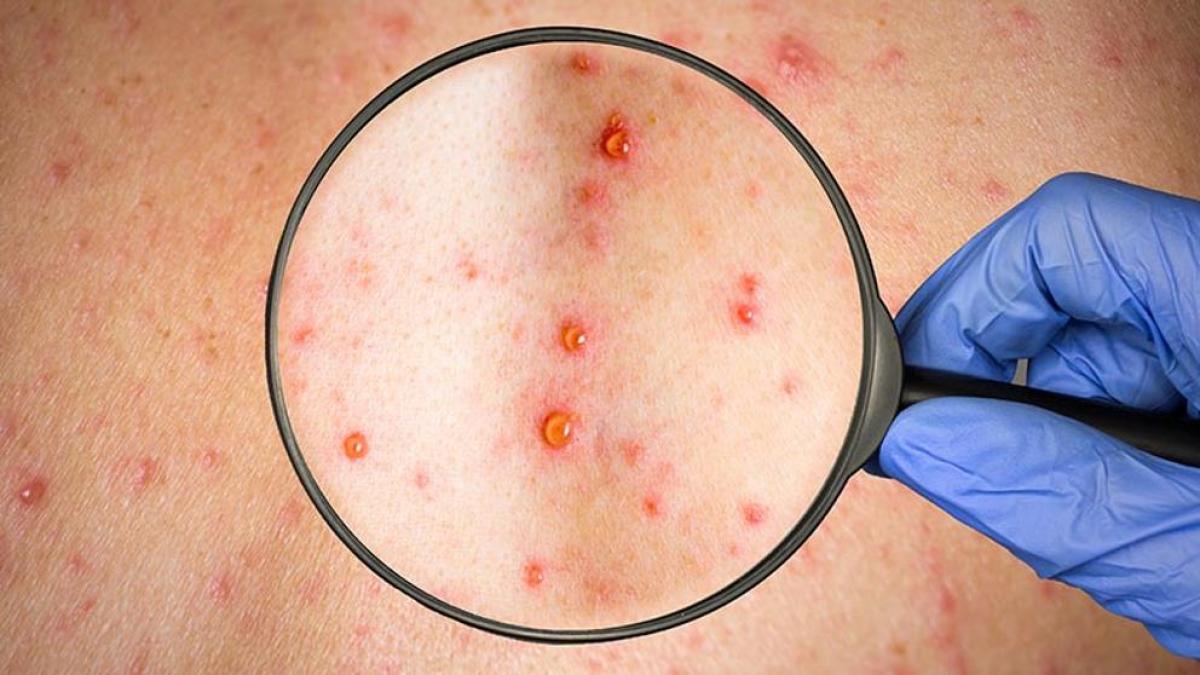During pregnancy, congenital rubella is the one that can be transmitted from the mother to the fetus through the placenta, causing serious disorders.
Rubella is a contagious disease caused by a virus of the togavirus family.
It affects both children and adults, but its real importance as a public health problem lies in the fact that if a pregnant woman is infected during the first months of pregnancy, the disease can also affect the fetus and cause serious congenital malformations. Therefore, if you want to have a baby, you should know if you have antibodies to rubella and, if not, you should get vaccinated.
Its Symptoms: It is a rash disease, that is, it is characterized by the appearance of a rash or reddish lesions initially on the face, to later spread to the rest of the body, along with a not very high fever, characteristic lymph nodes behind the ears, headaches, joint pain and conjunctivitis.
The infectious agent reaches the pharynx thanks to the inhalation of these contaminated droplets. Once there, it passes into the bloodstream and reaches the lymphatic tissue, where it stays and reproduces. Finally, when the virus has already multiplied enough, it passes back into the blood. It is at this time that the body begins to respond to the infection, producing antibodies capable of destroying the virus. The infected individual can spread the disease from about a week before the appearance of the rash until one or two weeks later.
rubella complications
Arthritis is common in women, usually affecting the fingers, wrists, and knees. The alterations that occur at the blood level can lead to hemorrhages due to the decrease in platelets. Both children and adults can get encephalitis after rubella. Another rare complication is mild hepatitis.
If the mother contracts rubella during the first months of pregnancy, she can transmit it to the fetus.
The risk of infection and serious sequelae decreases as pregnancy progresses. Thus, during the first two months there is an 80 to 90 percent chance that the embryo will become infected, and miscarriage often occurs. Among the most frequent alterations, cardiac disorders stand out, such as pulmonary artery stenosis, cataracts, which can be visible at the time of birth, or appear a few days later, glaucoma, and deafness, which is one of the manifestations most common permanent ones, and that can affect one or both ears. The newborn can also have a smaller head than normal (microcephaly) which usually leads to mental retardation and psychomotor development of the child.
Other manifestations of congenital rubella, although less frequent, are: jaundice, undescended testicles, enlarged liver and pneumonia.
Babies born with CRS shed the virus for one to two years, so they can infect people who live with them.
This disease sometimes goes unnoticed due to the mildness of its symptoms and, in addition, it can be confused with measles, so it is important to establish the correct diagnosis of rubella. Due to this possible confusion, clinical examination alone is not enough to check whether it is rubella.
In pregnant women it is important to know if there is an infection; In this way, any malformation that occurs in the fetus can be diagnosed by ultrasound.
In these cases, it may be useful to study a biopsy of placental tissue, which demonstrates the presence of viral particles, although the biopsy must always be performed after week 11 of gestation to avoid complications. Currently, IgG for rubella is also determined in all pregnant women, and when they do not have previous immunity, vaccination is recommended after delivery for future pregnancies.
There is currently no cure for rubella, and the treatment that is usually given is to relieve fever and joint pain (paracetamol).
Some of the side effects of the rubella vaccine are joint pain and fever, although tolerance is generally quite good. The vaccine is called ‘triple viral’ because three viruses are administered simultaneously: rubella, measles and mumps. Two doses are required: the first should be given between 12 and 15 months, and the second at 3 years of age.
It is advisable to vaccinate those adults who did not receive the vaccine in childhood, because this helps to reduce the incidence of the disease, which is especially important in women of childbearing age.
Pregnant women cannot be vaccinated against rubella (in fact, conception should be avoided for up to three months after administration of the vaccine), so if they lack antibodies (defenses) against the disease, it is imperative that they avoid contact with anyone who might be infected and to be vaccinated after delivery for future pregnancies.







